Oct 21,2025●By: GeoMaster HDD Drill Rods &Pipes
In the world of underground infrastructure construction, horizontal directional drilling (HDD) has revolutionized how we lay pipelines, cables, and utility lines—replacing traditional open-cut excavation with a faster, more eco-friendly alternative. At the heart of every successful HDD project are two critical components: HDD drill rods and HDD drill pipes. These tools work in tandem to navigate complex subsurface conditions, from soft urban soils to hard rock formations, ensuring projects stay on schedule and within budget. For contractors, engineers, and procurement teams, understanding the role, differences, and compatibility of HDD drill rods and pipes is essential to selecting the right equipment for their specific needs. This guide breaks down everything you need to know about these foundational HDD tools, with insights into how GeoMaster—China’s leading HDD tooling supplier—delivers high-performance solutions tailored to global industry demands.
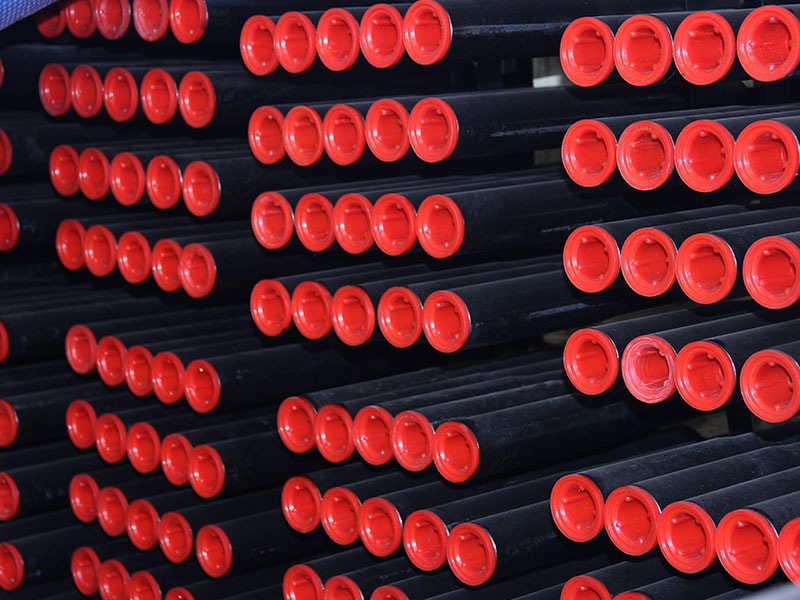
Non-invasive techniques, especially high-pressure rotary drilling technology, have become the preferred standard method for infrastructure construction in sensitive areas and high-traffic areas. Unlike traditional excavation methods, which disrupt traffic, damage the landscape, and pose the risk of pipeline collisions, high-pressure rotary drilling creates a smaller diameter conduit hole underground, widens it to accommodate the target pipeline, and pulls the pipeline into the designated position - the entire process causes almost no disturbance to the ground. This process relies entirely on the reliability of the high-pressure rotary drilling drill rods and pipes: without a durable and well-designed drill rod to transmit power and guide the drill bit, or without a pipe to transport critical fluids and protect the borehole, even the most meticulously planned high-pressure rotary drilling project can fail. High-pressure rotary drilling drill rods and pipes are not interchangeable components - each has unique and unalterable functions. The drill rod acts as the "power source" for operation, transmitting the torque and thrust of the drilling rig to the drill bit, while also transmitting real-time data from underground sensors back to adjust the drilling trajectory. In contrast, the drill rod functions as a "circulation system", responsible for transporting drilling mud (a mixture of water, clay, and additives) to cool the drill bit, lubricate the borehole, and remove debris brought up from underground. Together, they form a seamless system that enables high-density directional drilling technology to handle various projects ranging from 100 meters of residential cable installation to 5 kilometers of cross-river oil pipelines.
For industry professionals, choosing the appropriate high-density directional drilling drill rods and pipes means weighing factors such as geological conditions, project scale and drill rig compatibility. This is where reliable suppliers like GeoMaster come into play - they provide tools that meet API certification and undergo non-destructive testing, which can meet the strict requirements of modern high-density directional drilling projects while also offering customization options to adapt to unique operational needs.
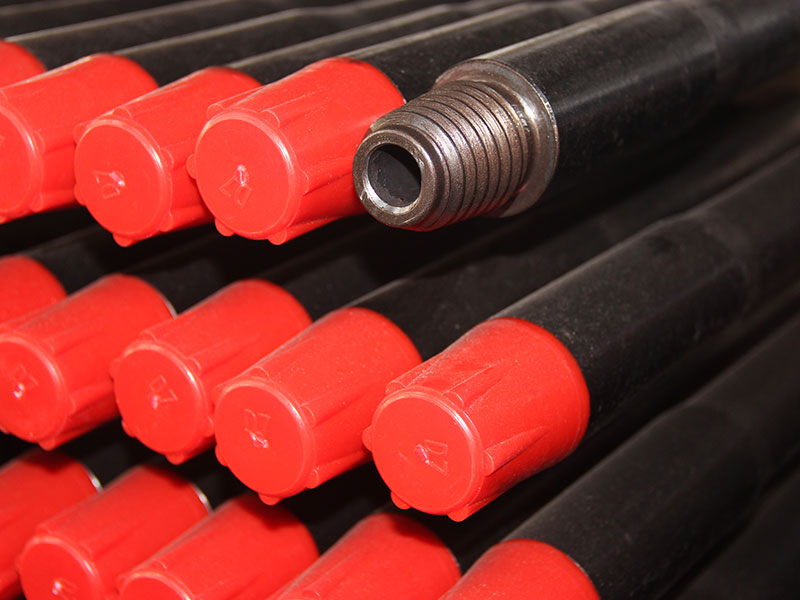
HDD drill rods are the primary load-bearing components of the HDD system, designed to withstand extreme mechanical stress while maintaining precision. Unlike generic drill rods used in mining or construction, HDD drill rods are engineered specifically for the horizontal, directional nature of HDD—where they must bend slightly to follow curved borehole paths without cracking or deforming. Let’s break down their key characteristics, functions, and technical specifications:
At its simplest, an HDD drill rod is a cylindrical, hollow steel rod that connects the drill rig to the drill bit. Its core functions include:
Transmitting Torque: The drill rig rotates the drill rod, which in turn spins the drill bit to cut through soil or rock. For hard rock formations, this requires rods with high torsional strength.
Delivering Thrust/Pull Force: During pilot hole drilling, the rig pushes the rod forward (thrust) to advance the bit; during pipe pullback, the rod pulls the pipeline into the expanded borehole (pull force). This demands high tensile strength.
Guiding the Borehole: Drill rods work with downhole navigation toolsto follow the designed trajectory. Their straightness and dimensional accuracy ensure minimal deviation from the plan.
Circulating Drilling Mud (Secondary): While drill pipes are the primary mud carriers, hollow drill rods may also transport small volumes of mud to the bit for cooling—especially in short-distance projects.
HDD drill rods are typically made from high-strength alloy steel, with grades tailored to project demands. The most common grades include:
S135: The industry standard for medium to heavy-duty HDD projects. With a minimum tensile strength of 1,034 MPa (150,000 psi) and yield strength of 930 MPa (135,000 psi), S135 rods excel in hard rock, long-distance crossings, and high-torque applications .
G105: A cost-effective alternative for soft to medium soils (e.g., municipal sewer lines). Its tensile strength (862 MPa / 125,000 psi) and yield strength (758 MPa / 110,000 psi) make it ideal for less demanding projects where budget is a priority.
R780: Designed for extreme conditions, such as deep-sea HDD or high-sulfide environments. R780 rods offer enhanced corrosion resistance and fatigue life, with a tensile strength of 780 MPa (113,000 psi).
To further improve durability, GeoMaster treats its drill rods with surface coatings like nitriding or phosphating. For ultra-corrosive environments, carbon fiber composite rods are also available—offering 60% less weight than steel while maintaining comparable strength.
HDD drill rods feature specialized designs to handle the unique stresses of directional drilling:
Segmented Lengths: Most rods are 3–9 meters long for easy transportation and on-site assembly. Longer rodsare available for large-scale projects to reduce the number of connections.
Thickened Joints: The area where the rod connects to the tool joint is the most vulnerable to stress. GeoMaster uses a upset forging process to thicken this region, creating a smooth transition from the rod body to the joint—reducing stress concentrations and preventing cracks.
Hollow Core: The rod’s hollow center allows for mud circulation and the passage of downhole sensors. The inner diameter varies by rod size—73mm rods typically have a 25mm inner diameter, while 168mm rods have a 50mm inner diameter.
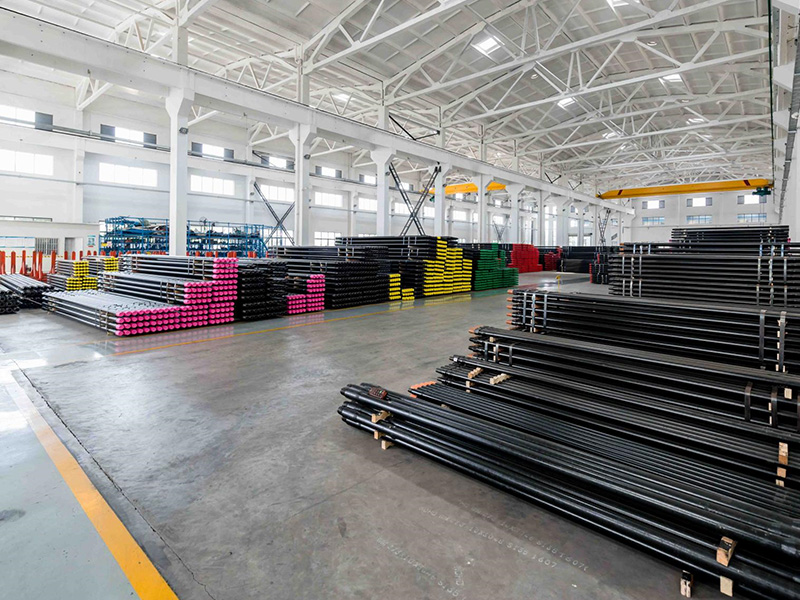
While HDD drill rods handle power transmission and guidance, HDD drill pipes play a supporting but critical role: ensuring the borehole remains stable and the drill bit stays cool. Often mistaken for drill rods, drill pipes are designed for fluid transport rather than heavy load-bearing—making their material, structure, and application entirely distinct.
HDD drill pipes are long, hollow tubular components that transport drilling mud from the surface to the downhole tools and carry cuttings back to the surface. Their key functions include:
Mud Circulation: Drilling mud is essential for HDD success—it cools the drill bit, lubricates the borehole, and suspends cuttings. Drill pipes deliver mud at high pressure to reach the bit efficiently.
Borehole Stabilization: In loose soils, mud creates a thin, impermeable film on the borehole wall—preventing collapse. Drill pipes ensure consistent mud flow to maintain this film.
Temporary Borehole Lining: During pipe pullback, drill pipes may act as a temporary sleeve to protect the borehole from damage while the final pipeline is installed. This is especially useful in rocky formations where loose debris could scratch the pipeline.Materials: Focus on Corrosion Resistance and Lightweight Design
Unlike drill rods, which prioritize high strength, HDD drill pipes use materials optimized for fluid transport and corrosion resistance:
API 5L B Class Steel: The most common material for standard HDD projects. API 5L B steel has a tensile strength of 415 MPa—enough to withstand mud pressure without deformation— and is coated with zinc or epoxy to resist rust from wet mud.
Stainless Steel (304/316): Used in corrosive environments, such as marine HDD projects or projects involving saltwater mud. Stainless steel prevents pitting and corrosion, extending the pipe’s lifespan by 50% compared to carbon steel.
HDPE (High-Density Polyethylene): A lightweight, non-metallic option for small-diameter projects. HDPE pipes are flexible, easy to install, and resistant to chemical damage from mud additives.
GeoMaster’s drill pipes are manufactured to ISO 9001 quality standards, with wall thicknesses ranging from 4mm to 8mm—ensuring they can handle mud pressures up to 100 MPa for deep boreholes.
HDD drill pipes are designed to maximize mud flow efficiency, with features that reduce pressure loss and turbulence:
Long Segment Lengths: Unlike drill rods (3–9m), drill pipes are typically 10–15m long. Fewer joints mean less flow restriction, ensuring mud reaches the bit at consistent pressure.
Smooth Inner Wall: The inner surface of GeoMaster’s drill pipes is polished to a roughness of Ra 0.8 μm—minimizing friction between the mud and pipe wall. This reduces energy consumption and prevents cuttings from sticking to the pipe.
Flange or Welded Connections: For carbon steel pipes, flanged connections ensure a leak-proof seal—critical for maintaining mud pressure. HDPE pipes use heat-welded joints, which are lighter and faster to assemble than flanges.
Low-Profile Ends: The ends of the pipe are tapered to reduce turbulence when mud enters or exits the pipe. This design prevents air bubbles from forming in the mud .
For many industry newcomers, HDD drill rods and pipes seem similar—but their design, function, and application are fundamentally different. Confusing the two can lead to equipment failure, project delays, and increased costs. Below is a detailed comparison of the key differences:
Comparison Factor | HDD Drill Rods | HDD Drill Pipes |
Core Function | Transmit torque, thrust, and pull force; guide the borehole. | Transport drilling mud; stabilize the borehole; protect the pipeline during pullback. |
Primary Material | High-strength alloy steel (S135, G105, R780) or carbon fiber. | Carbon steel (API 5L B), stainless steel, or HDPE. |
Strength Requirements | High tensile strength (≥780 MPa) and torsional strength (≥2,000 N·m). | Moderate tensile strength (≥415 MPa); focuses on pressure resistance (≥20 MPa). |
Structural Design | Short segments (3–9m); thickened joints; precision threads (API standards). | Long segments (10–15m); smooth inner wall; flanged/welded connections. |
Force Type | Composite forces: torque + thrust + bending (from curved boreholes). | Single force: internal mud pressure; minimal axial force. |
Application Stages | Used in all HDD stages: pilot hole drilling, reaming, pipe pullback. | Used only in reaming and pipe pullback stages (no need during pilot hole drilling). |
Maintenance Needs | High: Regular NDT testing (ultrasonic/magnetic particle) to check for fatigue cracks; thread lubrication. | Low: Simple cleaning (water flushing) after use; visual inspection for leaks. |
Lifespan | 50–100 project cycles (depends on stress and maintenance). | 300–500 project cycles (less stress than rods). |
Cost per Unit | Higher (≈200–500 per meter for S135 steel). | Lower (≈50–200 per meter for API 5L B steel). |
A contractor in Brazil made a costly mistake by using HDD drill pipes instead of drill rods for a pilot hole drilling project in hard rock. The pipes, designed for mud transport, lacked the torsional strength to spin the drill bit—resulting in three pipe failures, a 10-day project delay, and $50,000 in replacement costs. After switching to GeoMaster S135 drill rods, the project was completed on schedule with no equipment issues. This example highlights why understanding the difference between rods and pipes is critical to HDD success.
HDD drill rods and pipes must be compatible with the drill rig to ensure safe, efficient operation. Incompatible tools can cause thread damage, mud leaks, or even rig malfunctions—all of which increase project risk. The two most common rig brands in the global market are Vermeer and Ditch Witch, and GeoMaster’s tools are engineered to meet their OEM standards for full compatibility.
Vermeer is a leader in HDD rigs for medium to large-scale projects, with popular models including the Vermeer Firestick series, Vermeer S330, and Vermeer D24x40. GeoMaster’s HDD drill rods and pipes are compatible with these models through:
Thread Matching: Vermeer rigs use NC threads for drill rods. GeoMaster’s rods are machined to these exact thread specifications, ensuring a tight fit that prevents slippage during high-torque drilling.
Length Alignment: Vermeer rigs are designed for 6m or 9m drill rods. GeoMaster offers both lengths, eliminating the need for adapters .
Load Capacity Matching: The Vermeer S330 can generate up to 330 kN of pull force. GeoMaster’s S135 drill rods have a tensile strength of 1,034 MPa—enough to handle this load with a 2x safety margin.
For example, a U.S.-based contractor used GeoMaster 127mm S135 drill rods with a Vermeer Firestick 300 to drill a 800-meter pilot hole under a river. The rods’ compatibility with the rig’s torque system allowed the drill to maintain a consistent speed of 60 RPM, completing the pilot hole in 12 hours—3 hours faster than planned.
Ditch Witch specializes in compact HDD rigs for urban and residential projects, with top models like the Ditch Witch JT50, JT200, and JT30. GeoMaster’s tools are compatible with these rigs via:
Small-Diameter Optimization: Ditch Witch JT50 rigs use 73mm–114mm drill rods. GeoMaster offers 73mm G105 drill rods specifically designed for this rig, with a lightweight design that reduces rig strain.
Quick-Connect Systems: Ditch Witch JT200 rigs feature a quick-connect system for drill rods. GeoMaster’s rods include compatible quick-connect joints, reducing rod assembly time by 50%.
Mud Pressure Compatibility: Ditch Witch rigs typically use mud pressures of 20–30 MPa. GeoMaster’s 114mm API 5L B drill pipes are rated for 50 MPa—providing a safety margin that prevents pipe bursts during sudden pressure spikes.
A Canadian contractor used GeoMaster 114mm drill pipes with a Ditch Witch JT200 to lay a 500-meter water pipeline in a residential area. The pipes’ compatibility with the rig’s mud pump ensured consistent mud flow, preventing borehole collapse and avoiding damage to nearby homes.
When it comes to HDD tooling, reliability, compatibility, and customization are non-negotiable. GeoMaster—China’s leading HDD drill rods and pipes manufacturer—delivers on all three, with a track record of supplying high-performance tools to clients in 50+ countries. Here’s why global contractors choose GeoMaster:
GeoMaster offers a complete line of HDD tooling to meet every project need:
HDD Drill Rods: Sizes 73mm–219mm; grades S135, G105, R780; carbon fiber options; custom lengths.
HDD Drill Pipes: Sizes 114mm–325mm; materials API 5L B, stainless steel, HDPE; custom inner diameters for mud flow optimization.
Accessories: Drill rod joints, quick-connect systems, mud flow meters, and NDT testing kits—all compatible with Vermeer and Ditch Witch rigs.
HDD drill rods and pipes are the unsung heroes of modern infrastructure construction—enabling fast, eco-friendly projects that minimize surface disruption. Understanding their roles, differences, and compatibility with rigs is essential to project success. Whether you’re drilling a small residential pipeline or a large cross-river oil line, GeoMaster’s API-certified, NDT-tested tools deliver the reliability, performance, and customization you need.
Ready to take your HDD project to the next level? Contact GeoMaster today for a free quote or to learn more about our products. With GeoMaster, you’re not just buying tools—you’re partnering with a team that’s committed to your success.

In the world of underground infrastructure construction, horizontal directional drilling (HDD) has revolutionized how we lay pipelines, cables, and utility line...
Oct 17,2025/Industry news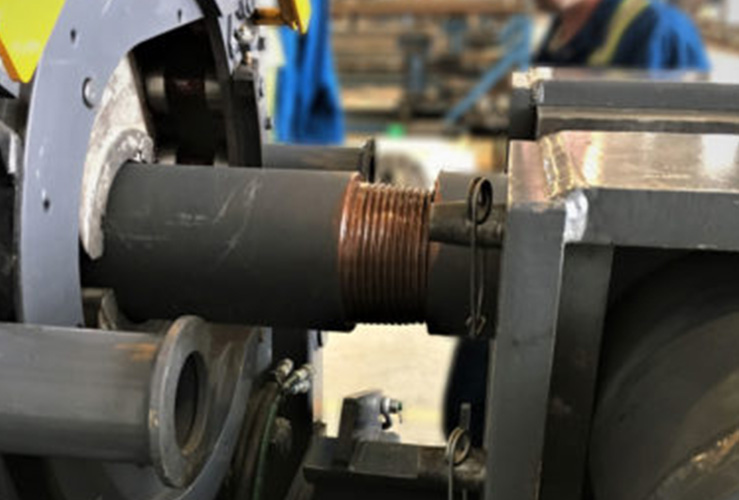
Horizontal directional drilling (HDD) machines have revolutionized the pipeline laying industry by offering a trenchless method that minimizes disruption to the...
Dec 03,2024/Exhibition News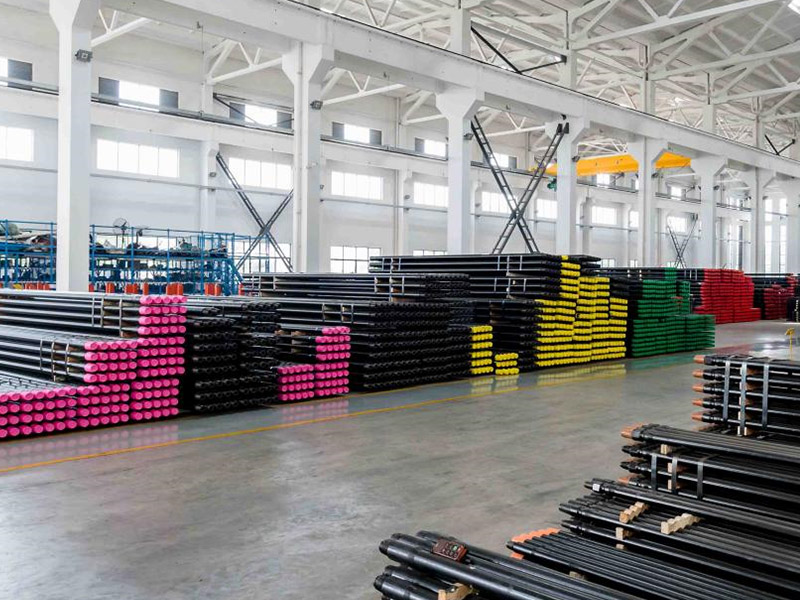
Drill pipes are crucial components in the oil and gas drilling industry, and their reliability and durability are essential for the success of any drilling oper...
Dec 03,2024/Industry news
Global High-quality Drill Pipe Solution Service Provider
+86-195-8045-6679
Jiaye Financial Center, Taihu Street, Economic Development Zone, Wuxi City, China